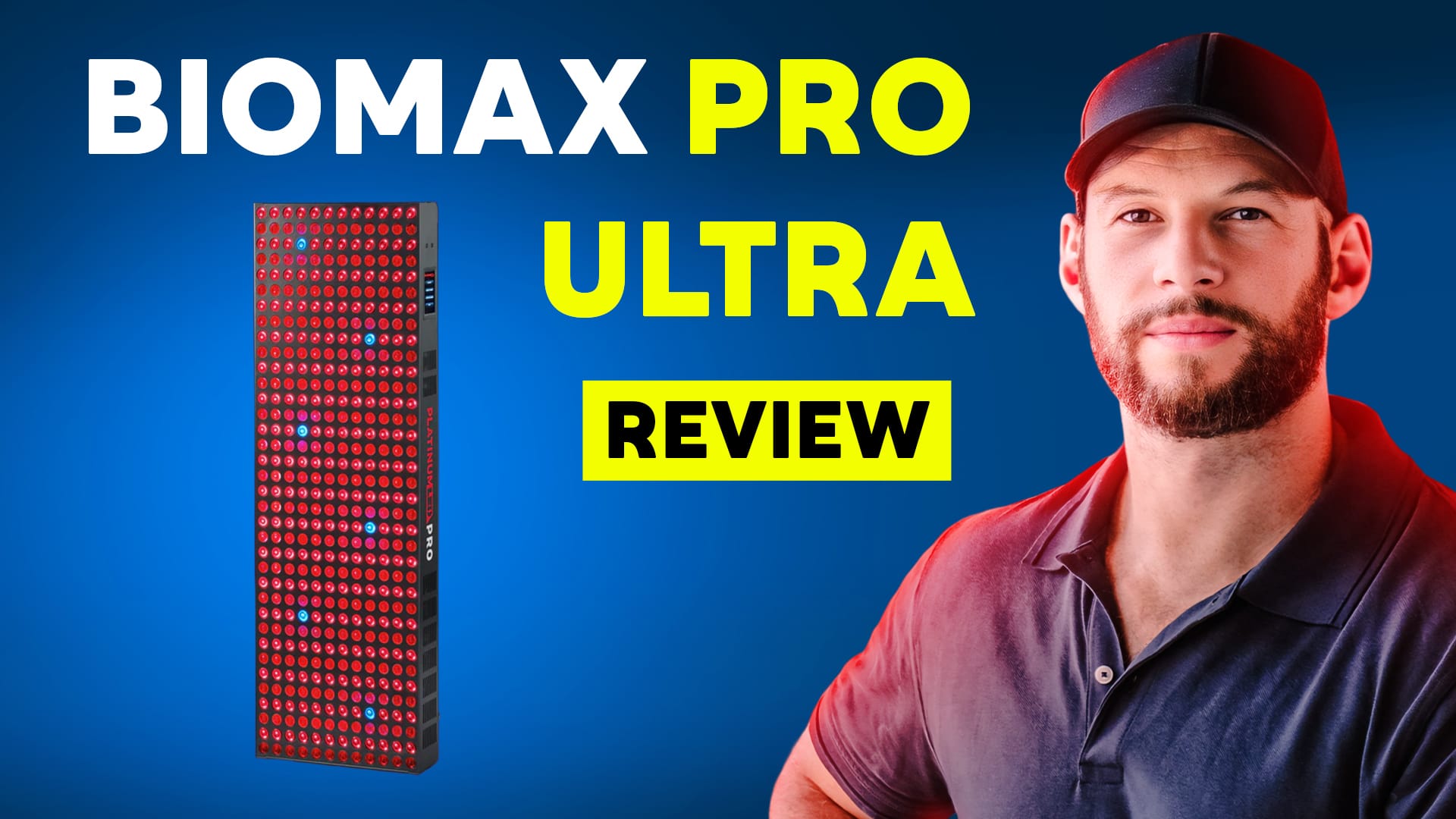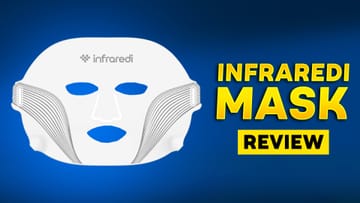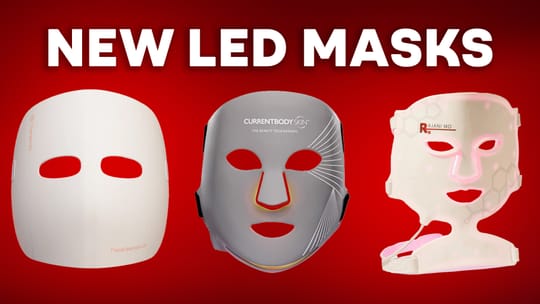The wait is over. After 18 months of development, PlatinumLED has released their brand-new Biomax Pro Ultra, and let me tell you right away—it’s an absolute powerhouse. This isn’t just a minor update; the panel has been re-engineered from the ground up and loaded with new features.
Before we dive in, a quick disclosure: I was sent this panel free of charge, and I’m affiliated with the company. If you purchase through the links below, you’ll save some money, and I’ll earn a small commission.
Let’s take a closer look, because there’s a lot to unpack here.
A Completely Redesigned Panel
The Biomax Pro Ultra represents a total reimagining of PlatinumLED’s flagship range. Compared to the already-powerful Biomax series, this new Pro lineup delivers:
- 20% more power output
- 30% more LEDs, stretching right to the edge of the frame
- A zero-gap design, which means you can connect multiple panels without dark spots in between
This is a big deal if you’re building a multi-panel setup, as previous designs always left a “dead zone” where the panels joined.
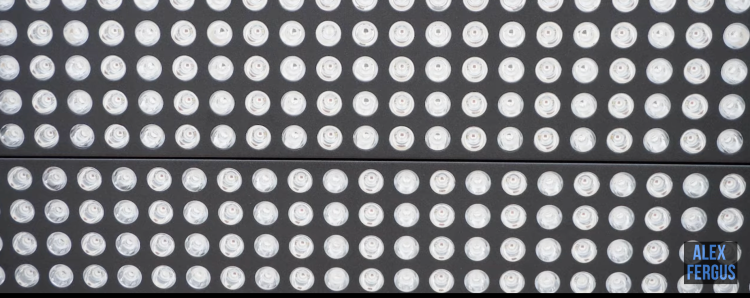
PlatinumLED has also introduced individual wavelength control, pulsing, and preset smart modes like deep tissue, sleep, skin repair, and mood/wellness. Add to this a newly designed remote, voice recognition, app connectivity, and compatibility with their existing stands, and you start to see how much thought has gone into this system.
Physically, this panel is large and heavy: 36 inches tall, 12 inches wide, 3 inches deep, and weighing in at 31 lbs. The Ultra is the biggest in the Pro range, housing 432 single-chip LEDs. I’ll share more on why that matters later.
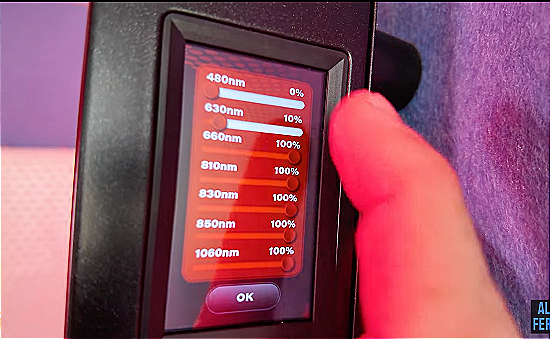
Wavelengths & Spectrometer Readings
PlatinumLED continues with its seven-wavelength formula, carried over from the BioMax panels. On my spectrometer, I measured:
- A small blue light peaks at 470 nm
- Strong red peaks at 630nm and 660nm
- Near-infrared peaks at 810, 830, and 850nm
- A very faint trace of 1060nm, confirmed by third-party lab testing
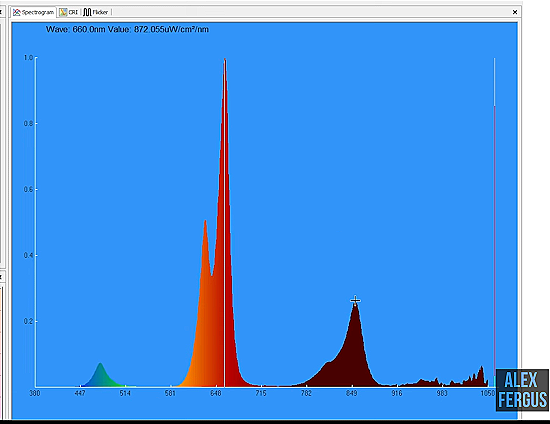
However, nearly 80% of the panel’s total energy goes into just two wavelengths: 660 nm and 850 nm. These are the “bread and butter” therapeutic wavelengths, while the other bands are present but relatively weak.
So, although it’s technically a seven-wavelength panel, in practice it behaves more like a five-wavelength device, as the blue and 1060 nm outputs are negligible.
Power Output
This is where the Ultra shines. My testing showed:
- Peak irradiance: 120 mW/cm²
- Average across nine spots: 101 mW/cm²
- Total wattage output: 256 W
To put that into perspective, this makes the Ultra the second-most powerful panel I’ve tested, only behind a small handheld unit that isn’t practical for full-body use. Compared to the Biomax 900 (which previously topped the charts), the Ultra comfortably takes the lead.
Sound levels were measured at 46.5 decibels, which is relatively quiet for a fan-cooled panel.
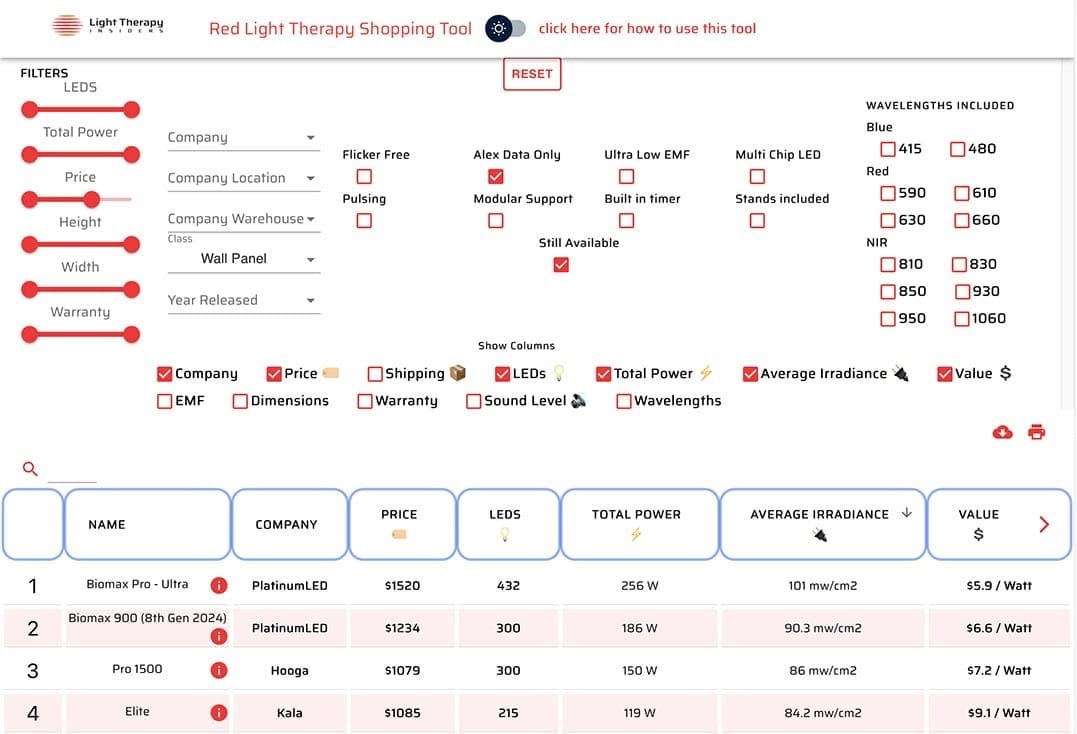
Price & Value
The Biomax Pro Ultra retails for $1,599, but with my discount link,https://aferg.co/redled , the price drops to about $1,520. Shipping is free in the US, UK, and Canada. Some regions (like Australia) will face additional shipping costs.
From a value perspective, this works out to $5.90 per therapeutic watt, putting the Ultra at the very top of the price-to-power leaderboard among wall panels I’ve tested.
Included in The Box
- A detailed manual
- Protective eye goggles
- The new remote
- Hanging Kit
Optional accessories include:
- Wall mount ($80)
- Mobile/horizontal stand ($400)
- Motorized stand ($800)
Warranty is 3 years, with a 60-day return policy—though PlatinumLED reserves the right to charge a hefty 20% restocking fee if you return it—something to keep in mind.

What I Like
- Unmatched power: Market-leading output, far stronger than almost any competitor.
- Zero-gap design: Perfect for multi-panel setups without awkward shadows.
- Advanced controls: Pulsing, wavelength customization, and preset modes give you flexibility.
- Good value: For the amount of light you get per dollar, it’s one of the best options out there.
- Established brand: PlatinumLED has been in the game for over a decade, and this shows in the engineering and ecosystem (stands, app, accessories).
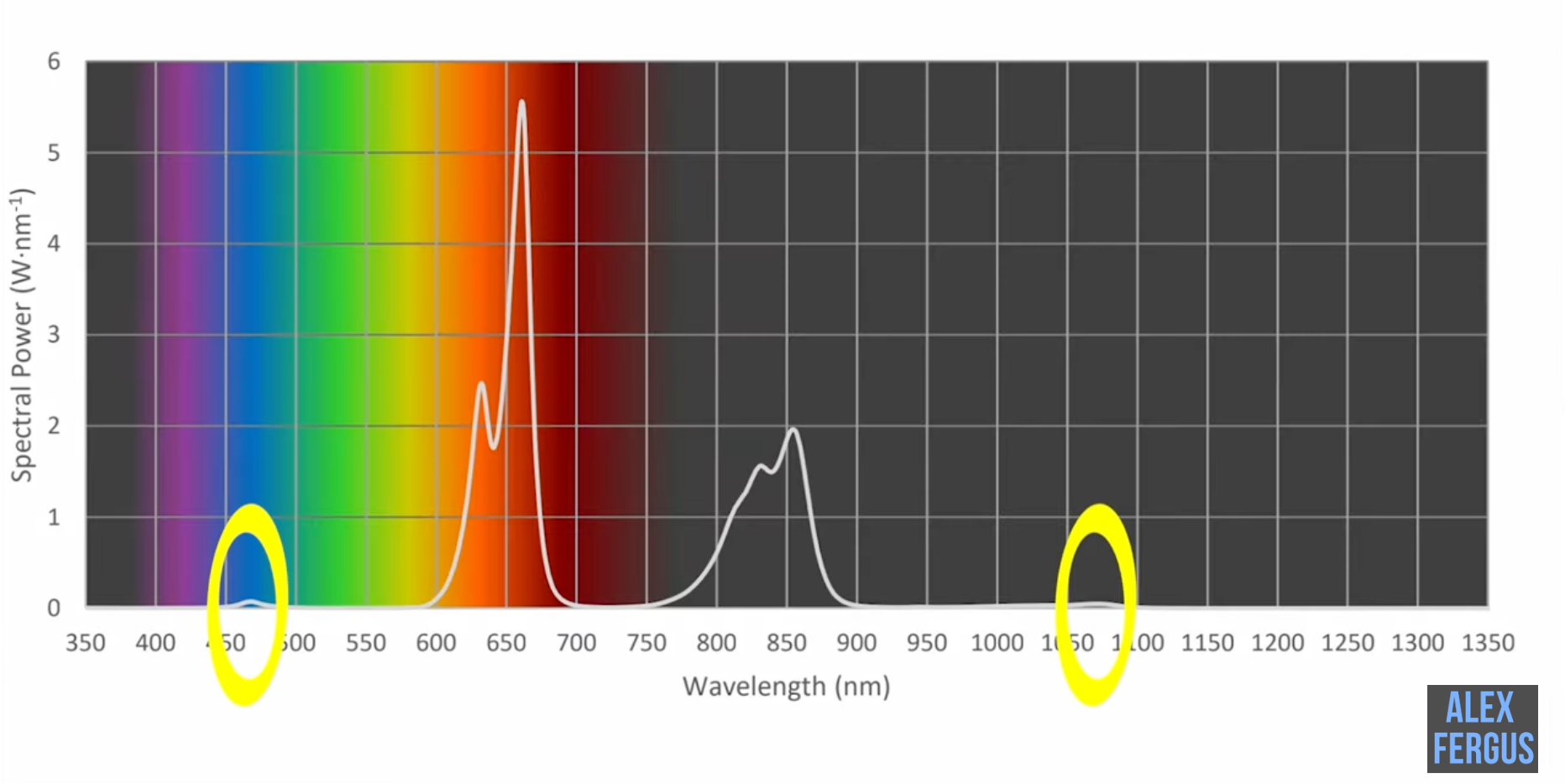
What I Don’t Like
- Restocking fee: That 20% fee can be painful if you change your mind. Be extra careful with packaging if you’re considering returning it.
- High/low power switch: To run multiple panels on one outlet, you’ll have to cut the power output in half. It works, but it’s a huge performance drop.
- Weak output at minor wavelengths: Blue and 1060 nm are barely present, so if those were your reason for buying, you’ll be disappointed.
- Display limitations: The panel doesn’t show what mode or wavelength settings you’re in—only the session timer. This can be frustrating and lead to guesswork.
- No custom presets: You can’t save your combination of wavelengths, pulse rates, and session times. You’ll have to set them manually each time.
- Hanging system: The hook system feels fiddly compared to older screw-in setups.
- Polka dot effect: The single-chip LEDs don’t blend light as smoothly as dual-chip designs, so you get noticeable spotting instead of a seamless wash of light.
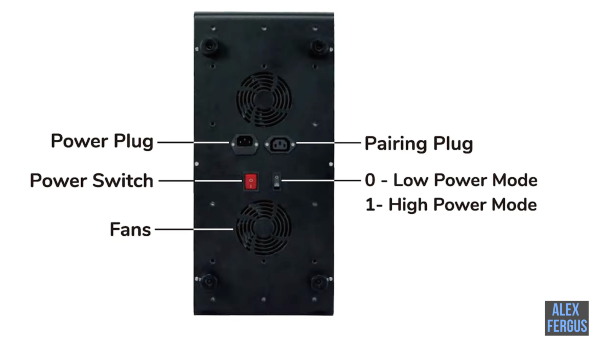
Who Is It For?
The Biomax Pro Ultra is best suited for:
- People who want maximum raw power for deep tissue penetration.
- Athletes or those with ligament, joint, or bone issues who are looking for serious therapeutic energy.
- Users planning multi-panel setups who will benefit from the zero-gap design and ecosystem of stands.
However, if your interest is more in pulsing, customized modes, or niche wavelengths like 1060nm, there are better options available.
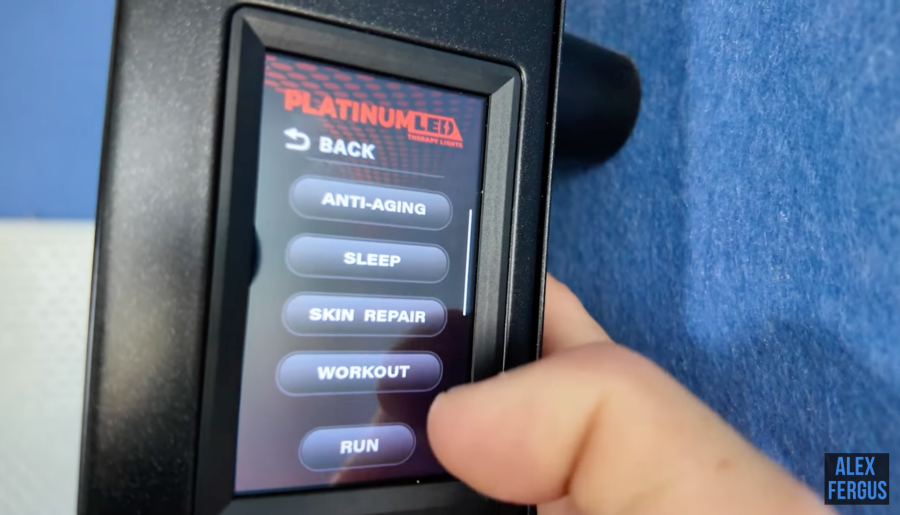
Competitor Comparisons
- Price: $1,275 (discounted)
- Power: ~81 mW/cm² average (10–20% less than Ultra)
- Features: 5 wavelengths, 300 dual-chip LEDs, 5-year warranty, no restocking fees
- Strength: Excellent spread of light (no wavelength under 15% of total power)
- Value: A bit less power than the Ultra, but better warranty and no return risks
- Price: $1,300
- Power: ~60% of Ultra’s output
- Features: 8 wavelengths, no blue, but heavy 1060 nm presence
- Strength: If you want 1060 nm, this is the clear choice
- Value: Lower power, but strong feature set and smoother blended light
- Price: Under $1,200
- Power: ~72 mW/cm² average
- Features: 300 dual-chip LEDs, 5 wavelengths, pulsing, preset modes, no restocking fees
- Strength: Budget-friendly large panel with smart features
- Value: Significantly cheaper, more than enough power for most people
Final Thoughts
The Biomax Pro Ultra is one of the most powerful red light therapy panels available today. If what you want is sheer therapeutic horsepower, it’s hard to beat. The engineering is solid, the accessories and app ecosystem are polished, and the zero-gap design finally solves one of the old Biomax range’s most significant weaknesses.
That said, this is a specialist’s panel. For many users, the Ultra may even be too powerful. If you’re after more balanced wavelengths, smoother blended light, or advanced user-friendly features, competitors like the Rouge G4 or Block Blue Light Mega may be better choices. And if budget is the deciding factor, the Rojo 900 offers excellent performance for the price.
For those chasing maximum intensity in the proven 660 nm and 850 nm wavelengths, though, the Biomax Pro Ultra is an absolute beast.
📌 Items Mentioned in this Article
| Product | Link | Discount |
|---|---|---|
| 🔥 PlatinumLED Panel | Shop here | The Discount shows after clicking |
| 🔥 Block Blue Light Panel | Shop here | Auto-applied at checkout |
| 🔥 Rouge Care Pro G4 Panel | Shop here | Use code ALEX |
| 🔥 Rojo Refine Panel | Shop here | Use code ALEX |
Found This Interesting? Then You Might Like
♦️ 18 Science-Backed Systemic Effects Of Red Light Therapy
♦️ Red Light Therapy And Its Potential For Diabetes
♦️ Using A $20 Grow Light For Red Light Therapy - Fact Or Fiction?
♦️ Does Red Light Therapy Create Vitamin D? Check This Important Data!
Have You Seen These Reviews
♦️ CurrentBody Series 2 Mask Review: Unique Design Tested
♦️ CeraThrive Review: Red Light For The Gut & Brain
♦️ Mito Red MitoPRO 300 X Review: Upgraded Even Further?
♦️ $2000 Alibaba Laser for Red Light Therapy — Worth It?
Alex Fergus wrote this blog post. Alex is an ISSN Sports Nutrition Specialist, Fitness Professional, and certified Superhuman Coach who continues to expand his knowledge base and help people across the world with their health and wellness. Alex is recognized as the National Record Holder in Powerlifting and Indoor Rowing and has earned the title of the Australian National Natural Bodybuilding Champion. Having worked as a health coach and personal trainer for over a decade, Alex now researches all things health and wellness and shares his findings on this blog.

